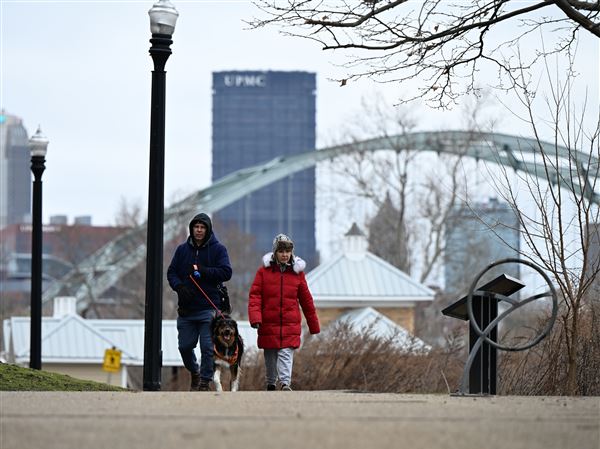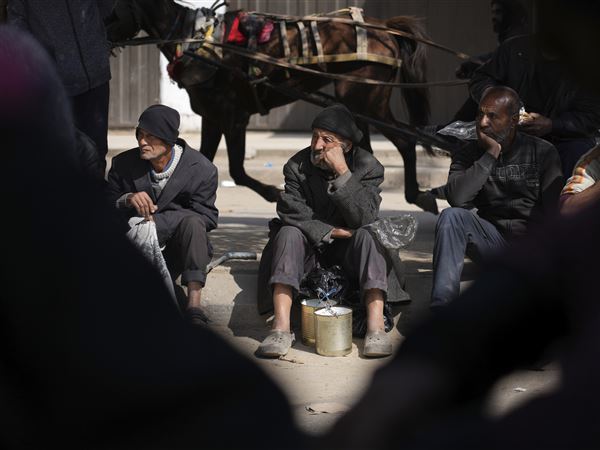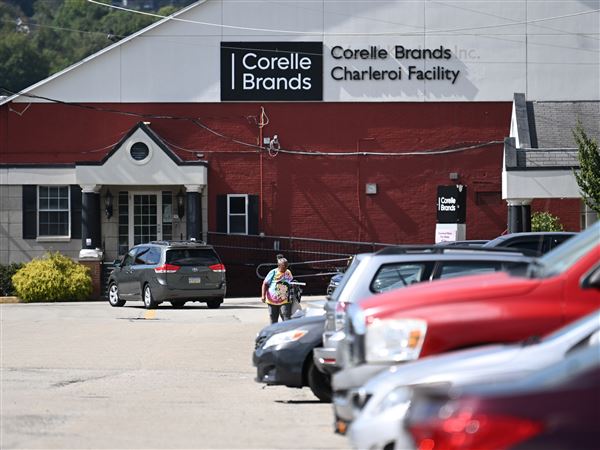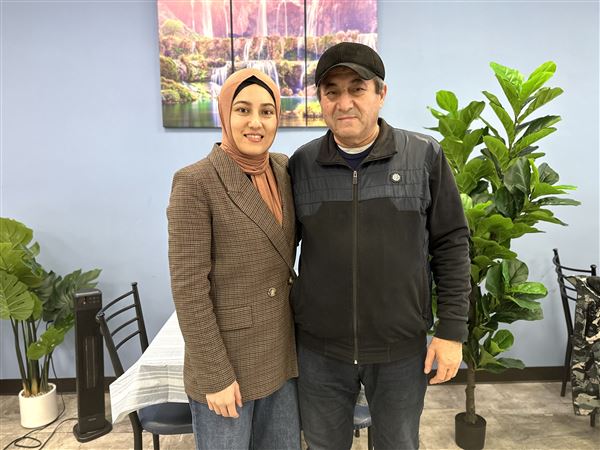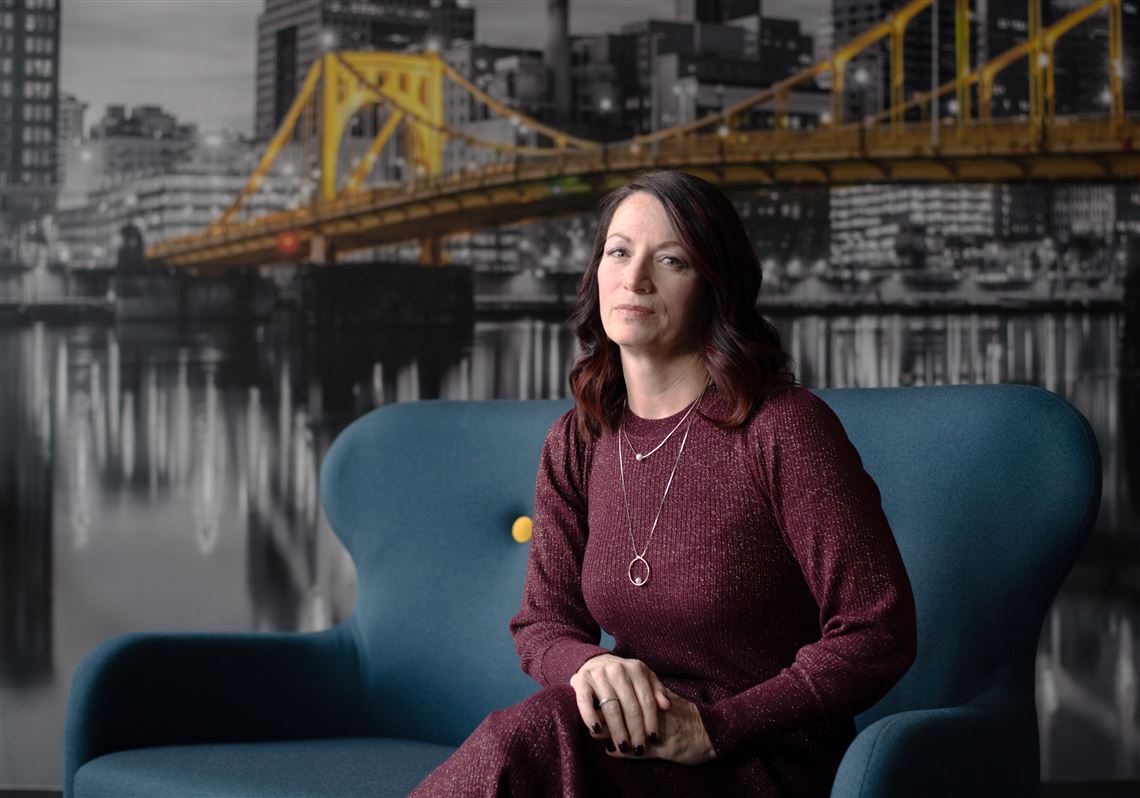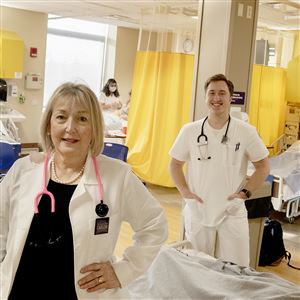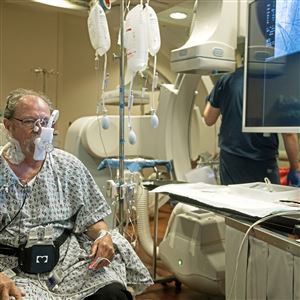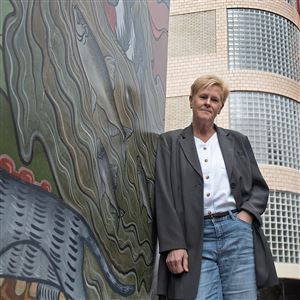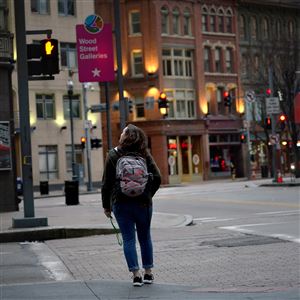Lexi Robinson and her team’s 18-month plunge into the fears of COVID-19 began with a casual question.
The team, part of a state organization assisting senior care homes, was supposed to assess whether the homes were prepared for COVID-19, then figure out what they needed. If necessary, home administrators could call the teams for a “rapid response” if they had a COVID-19 outbreak.
On this day, in the first week of August 2020, team members had just stepped into the fourth of 59 buildings they were responsible for in southwestern Pennsylvania.
All they knew was that it was a nursing home whose administration had agreed to welcome them in for an assessment, just like the three prior homes they had visited.
“As we were standing there chatting, someone mentioned that they had COVID in the facility,” said Ms. Robinson, a senior clinical manager for Helion, a subsidiary of Highmark Health that provides services to home and community health programs.
“And, OK, ‘How many [COVID] patients do you have?’ And they said 68. And we said, ‘Well what’s your [total number of residents]?’ And their census was 95. And so I think that at that moment myself and my colleagues kind of looked at each other and went, ‘Oh. Here we go.’”
That was the first outbreak case for Ms. Robinson’s team. They knew that a building where nearly three-quarters of the residents had COVID-19 meant not only that the staff was likely stretched thin and stressed, but also that many of those staffers themselves were probably sick. So the team quickly took the first step it could to help the most.
“We had some [personal protective equipment] we carried with us, and we went to our cars ... so we could get the right kind of masks on everybody, and gown everyone correctly,” she recalled. “Very quickly, in a matter of an hour, get everybody wearing PPE the way they needed to be, so they could decrease transmission.”
Over the next year-and-a-half, as Ms. Robinson and her staff made hundreds more visits to nursing, personal care and assisted living homes, she felt the atmosphere of fear in some buildings, the sense of relief in others, and found the resilience of long-term care staff that defied the challenges they faced.
“They weren’t always looked upon as the best in the media,” she said, because of the soaring number of COVID-19 cases and deaths in those facilities at the time. “When in all actuality they cared very much.
“They needed the resources and the partnership and the help to do it. So given what they had and [what] they started with, they were incredibly resilient — those workers, those aides, those nurses — to stay and to weather the storm and continue to do what they did every day and to be open to have someone come in and say, hey, let’s do this a little better. That’s not always easy. So I find what they did amazing.”
Caring for the caregivers
Ms. Robinson’s work with the state program began in July 2020, after the state created the Regional Response Health Collaborative Program, known as RRHCP.
The program, funded by $175 million in federal CARES Act funding, divided the state into six regions, with each region led by health care providers who would send caregivers to assist long-term care facilities.
UPMC Community Provider Services was the lead in the 11-county southwest region, with Allegheny Health Network as a partner. They split up the region’s 599 long term-care buildings — 178 nursing homes, 404 personal care homes, and 17 assisted living homes — with UPMC leading one half and AHN the other.
Given her job working with long-term care facilities for Helion, Ms. Robinson was asked to be the regional lead of one of AHN’s subgroups in Washington County and southern Allegheny County with 59 buildings.
“Anything we could do to help,” she said.
The RRHCP’s mission was to fill all the gaps in a home’s needs in dealing with COVID-19, from infection control education, to help with testing and personal protection equipment, to adding staff when employees were out sick, to being available around-the-clock for questions.
The state had a skeleton version of the program prior to RRHCP known as the Education Support and Clinical Coaching Program. But that program was not nearly as well funded or staffed. It also never had the broad mission RRHCP — and a third version of it in 2021 known as the Regional Congregate Care Teams — did to visit and be available to help every one of the state’s 1,900 long-term care homes during the pandemic.
If that seemed to be a daunting task when RRHCP was created in the relative calm before the storm that was early summer of 2020, the challenge could seem never-ending by the time case counts and deaths in long-term care homes exploded that fall.
“There were long days,” Ms. Robinson said. “But that was true for everyone.”
Listening skills
Originally from Wheeling, W.Va., Ms. Robinson, 47, was the youngest of three brothers and two sisters. She went to undergraduate and graduate school at West Virginia University.
Her graduate degree was in critical cardiopulmonary physiology. That led to a role working in the cardiology department at AHN’s Jefferson Hospital for 16 years. She rose to the position of director of cardiology services before she took a job in 2016 with what became Helion.
It was mentors at Jefferson, as well as advice from her late father, that formed her management style.
“My dad was a vice president in an aluminum mill in Ohio, and he always said the hardest part of a job is managing people and getting what you want out of your employees,” she said. “But I also had some great mentors at Jefferson. And I learned a style that was to sit back and listen to your folks that you work with, whether it's your peers, your employees, or your patients.”
Despite her background, Ms. Robinson said that on Aug. 3, 2020, when she and her team made their first visit to a home, “there were definitely some butterflies about what we were going to see.”
The team of four — which sometimes became just two if demands pulled the team in two directions — was intentionally made up of people with diverse work backgrounds: nurses, respiratory therapists, and Ms. Robinson’s background in cardiology, and experience working directly with caregivers in hospital intensive care units or in other long-term care settings.
Their days began at 7 a.m., with an organizing “huddle” call at 7:30 a.m., and then a full day visiting as many facilities as they needed to. While some days could end at 5 p.m., on others, she said, “I’d leave again at 9 p.m. to go with the National Guard into a facility.”
To become a trusted resource, Ms. Robinson gave her personal cell phone number to staff in the homes. Though the RRHCP had physicians available by phone day or night, the calls to her came at all hours with questions both basic and complicated.
After a few months of visiting buildings, “walking into a building that doesn’t have it, you let out a sigh of relief that they didn’t have COVID. Like, OK, now we have the time to sit down and really walk through things with them,” she said.
“When you walked into a COVID building, we didn’t have time to sit down. We were immediately like, ‘OK, let’s assess the situation and try to help you and find out what your needs are,’” she said. “Many of our nurses passed food trays and helped move patients around. We’d do what needed to be done to relieve some of the burden on the staff.”
It was the visit in August 2020, when 68 of the 95 residents were COVID-19 positive, that really grounded Ms. Robinson and her staff and prepared them for the surge that was coming over the next five months.
“When you have 68 positive residents, you can probably imagine how many positive staff you have as well,” she said.
“That very quickly turned into a rapid response,” she said. “We very quickly had to kind of mobilize and figure out what they needed, what kind of PPE, and had it shipped that same day.”
At the time, with cases beginning to rise, getting gowns and proper N-95 masks and face shields was one of the largest challenges in every health care setting nationwide. But long-term care homes, which did not typically keep large amounts of PPE in reserve, had an even harder time obtaining enough gear for all their staff and patients until state programs like Ms. Robinson’s came along.
Calling for backup
Under a rapid response, Ms. Robinson, as team leader, not only had the ability to order masks and gowns, but, if need be, to hire temporary staff quickly. And, if the situation had completely deteriorated in a building and too many staffers were out sick, she could call in the National Guard.
The guard had medical team units that could provide health care assistance, but its most common support for long-term care homes was simply additional hands to clean, disinfect, make food and help to separate patients with COVID-19 from those not infected.
Over the 18 months she led her team, she had to call in the National Guard 10 to 15 times, she said.
“I can remember specifically a building we went into in early November — and we’d been into probably 150 to 200 buildings at that point — they had had an outbreak. We’d gone in and assessed and decided they needed the National Guard.”
The feeling in such buildings was different, she said, and staff members sensed it before they were even told.
“This was the building’s first outbreak and it was progressing to a relatively large outbreak and we walked onto the unit where they were quarantining patients. It was myself and one of our infection prevention team educators and we could see in everybody’s eyes ... kind of that scared, ‘What are we doing? And are we doing it right? And what do we tell patients? And what do we tell family members?’
“And you could tell everybody was tired,” she said. ““When you walked on that unit, there was a tone that you could kind of feel. ...”
So, how do two strangers gain the trust of a scared, tired and confused staff to help them change what they’re doing?
Ms. Robinson said she used quick hallway talks to let staffers express themselves.
“We literally stopped for 15 minutes in the middle of the hallway and said, ‘This is what we’re here for. Can we take 15 minutes of your time? And let’s have a kind of very quick, down and dirty. Do you understand what’s happening? Do you understand why you’re wearing a face shield and why you wear a face mask? And how are you feeling?’”
A staffer spoke up: “I’ve been a nurse for 30 years and I’ve never been through anything like this and I’m scared of taking this home to my family.”
Eventually, most of those in that hallway got to express their own fears and concerns, which included the very real point one of them made about what they knew about COVID-19 and how to prevent transmission.
“As I watched people walk away after giving people the opportunity to say, ‘I’m scared of this and scared of that; we’re doing this and we’re not doing that,’ we started to get the questions of how do I do this? How do I do that? And after that 15 minutes I watched that group of people walk away with a little bit of a different look in their eyes.”
Days like that took a toll, she admits. Coming home after long days that sometimes rolled into long nights, she said her default strategy was to walk her dog, spend time with her husband and high school-age son, and try to forget about COVID-19, if possible. “Though conversations always came back to it. It was in the news. It was everywhere.”
But part of the relief came from the deep satisfaction of the work playing out in buildings where the fear in staff members’ eyes is what first greeted her.
Signs of change
Coming back months or even a year later, she found facilities had followed her team’s advice. Masks and gowns were being worn properly. Isolation was being used for COVID-positive patients. Regular testing was being done for early detection of the virus. And it helped that most facilities had gotten almost all their staff and residents vaccinated.
As a result, a year later, “when you walked into facilities we didn’t see as much of that” scared look in their eyes, even during later outbreaks, she said. “We were walking into things that were already done, versus things that still needed to be done.”
It was more than gratifying.
“I think that we’re all pretty humble as health care workers. We don’t like to pat ourselves on the back and say, ‘Great job,’” she said.
“But I look at the teams at UPMC and AHN, and the impact that these teams had, it’s not even measurable.” Referring to Helion’s medical director, Dr. Emily Jaffe, she said, “As Dr. Jaffe told us: The number of lives that were impacted by the work that was done through the grant was great. We saved lives.”
She continued: “When I walk back into a facility and feel, ‘Ah, yes; everybody really took our advice and support and ran with it.’ Yes, it made me smile. I certainly didn’t do what a front line worker [there] did, but at least to have a little bit of impact and to help a facility, to help their staff, to help those residents, not directly, but by supporting their caregivers through the pandemic, I was definitely proud of our team.
“It is why we do what we do.”
Sean D. Hamill: shamill@post-gazette.com or 412-263-2579 or Twitter @SeanDHamill
First Published: March 20, 2022, 10:00 a.m.
Updated: March 21, 2022, 10:14 a.m.
